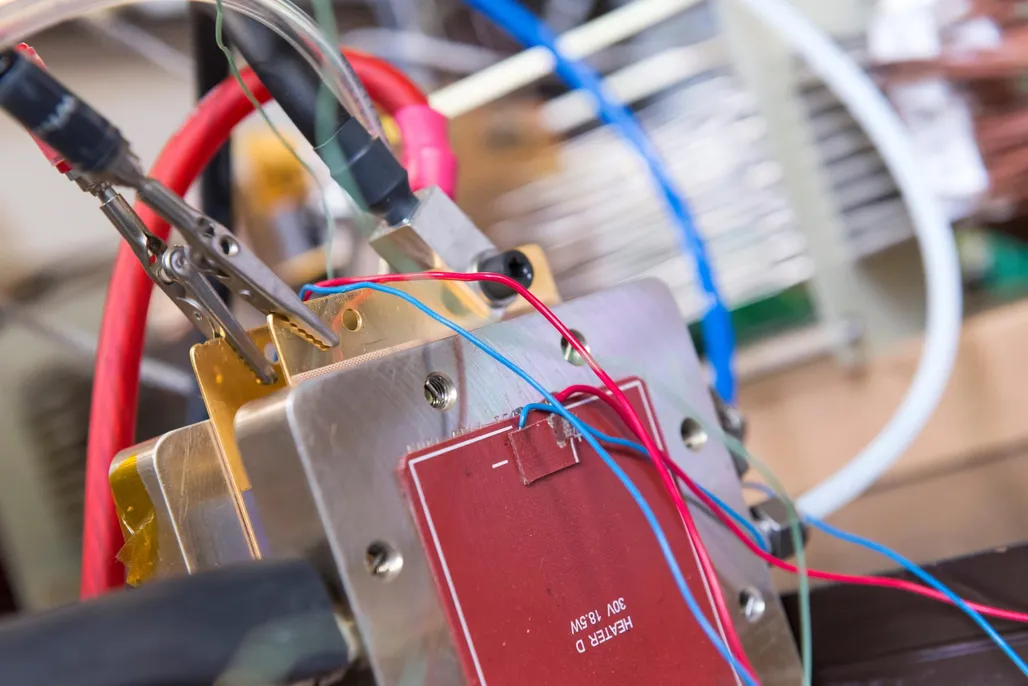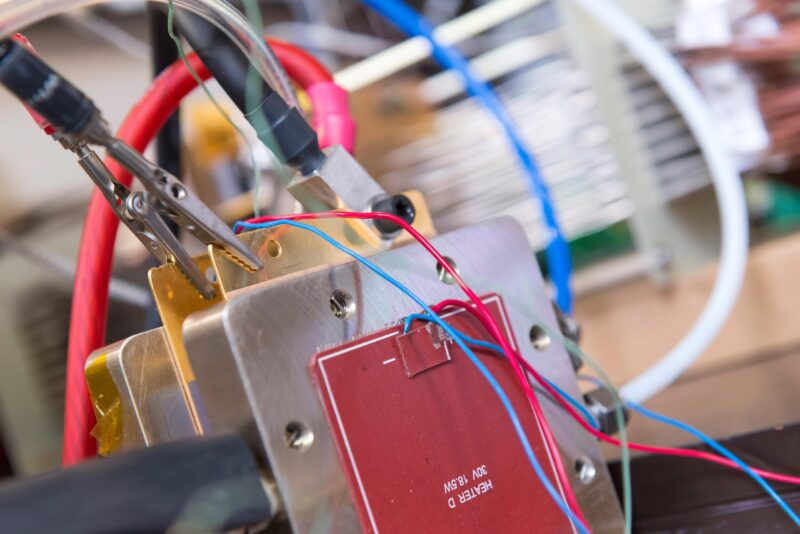
La nouvelle pile à combustible est testée en laboratoire. Crédit : Imperial College London
Des chercheurs de l’Imperial College ont mis au point une nouvelle pile à combustible à hydrogène qui utilise du fer au lieu du platine rare et coûteux, permettant ainsi une plus grande utilisation de cette technologie.
Les piles à combustible à hydrogène convertissent l’hydrogène en électricité avec seulement de la vapeur d’eau comme sous-produit, ce qui en fait une alternative verte attrayante pour l’énergie portable, en particulier pour les véhicules.
Cependant, le coût de l’un de ses principaux composants a empêché son adoption à grande échelle. Les piles à combustible s’appuient sur un catalyseur en platine, qui est cher et rare, pour faciliter la réaction qui génère l’énergie.
Aujourd’hui, une équipe européenne dirigée par Imperial College London researchers has created a catalyst using only iron, carbon, and nitrogen – materials that are cheap and readily available – and shown that it can be used to operate a fuel cell at high power. Their results are published today (April 25, 2022) in Nature Catalysis.
Lead researcher Professor Anthony Kucernak, from the Department of Chemistry at Imperial, said: “Currently, around 60% of the cost of a single fuel cell is the platinum for the catalyst. To make fuel cells a real viable alternative to fossil-fuel-powered vehicles, for example, we need to bring that cost down.
“Our cheaper catalyst design should make this a reality, and allow deployment of significantly more renewable energy systems that use hydrogen as fuel, ultimately reducing greenhouse gas emissions and putting the world on a path to net-zero emissions.”
The team’s innovation was to produce a catalyst where all the iron was dispersed as single atoms within an electrically conducting carbon matrix. Single-atom iron has different chemical properties than bulk iron, where all the atoms are clustered together, making it more reactive.
These properties mean the iron boosts the reactions needed in the fuel cell, acting as a good substitute for platinum. In lab tests, the team showed that a single-atom iron catalyst has performance approaching that of platinum-based catalysts in a real fuel cell system.
As well as producing a cheaper catalyst for fuel cells, the method the team developed to create could be adapted for other catalysts for other processes, such as chemical reactions using atmospheric oxygen as a reactant instead of expensive chemical oxidants, and in the treatment of wastewater using air to remove harmful contaminants.
First author Dr. Asad Mehmood, from the Department of Chemistry at Imperial, said: “We have developed a new approach to make a range of ‘single atom’ catalysts that offer an opportunity to allow a range of new chemical and electrochemical processes. Specifically, we used a unique synthetic method, called transmetallation, to avoid forming iron clusters during synthesis. This process should be beneficial to other scientists looking to prepare a similar type of catalyst.”
The team collaborated with UK fuel cell catalyst manufacturer Johnson Matthey to test the catalyst in appropriate systems and hope to scale up their new catalyst so it can be used in commercial fuel cells. In the meantime, they are working to improve the stability of the catalyst, so it matches platinum in durability as well as performance.
Reference: “High loading of single atomic iron sites in Fe–NC oxygen reduction catalysts for proton exchange membrane fuel cells” 25 April 2022, Nature Catalysis.
DOI: 10.1038/s41929-022-00772-9



